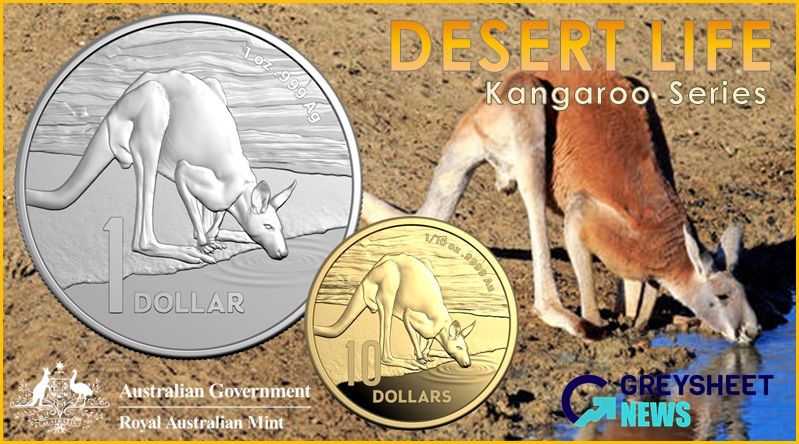Netherlands: Latest Silver Proof Ducat Released In Dutch City Gates Series Features Sabelspoort
The Royal Dutch Mint release the latest silver proof ducat in their series entitled Dutch City Gates.
Launched at the end of last year, the fourth coin features a design that focuses on an historic landmark in the Dutch province of Gelderland. In the city of Arnhem is the Sabelspoort, or Sabres Gate, a stronghold gate built in 1357 and is the only one of four gates in the original city walls still intact. Unfortunately the other gates of the Rijnpoort, St. Janspoort and the Velperpoort have over time been lost during battles or have been torn down to make way for new structures. The main purpose of the Sabelspoort was to guard the road to the east and the pathway to Emmerich, Huissen and Cologne. The Sabelspoort acquired a greater symbolic significance when Adolf, Duke of Guelders (r. 1465 – 1477) asserted his authority. With the consent of the municipal authorities, he also gained control of the Sabelspoort which gave him the right to enter the city whenever he wished and collect tolls or revenue from passage through the Gate. Unfortunately for Adolf, he was taken prisoner by Charles the Bold, Duke of Burgundy two years later. Charles appointed Adolf’s father as the new Duke of Guelders which displeased the citizens of Arnhem so much, they promptly occupied the Sabelspoort though to no avail.
A century later and under the rule of Charles II, Duke of Guelders (r. 1492 – 1538) the Sabelspoort took on an additional function. As the Duke was displeased the Rhine lay at such a distance from the city, that in 1530 he commissioned the re-excavation of an old river channel to the nearby Nederrijn river which diverted the waters up to the vicinity of the city walls. However, the canal and Nederrijn which was fed from the Rhine became so dangerous and threatened flooding of the town of Arnheim that measures were adopted in 1563 to re-fill the canal and restore it to usable land once again.
As Sabelspoort was the only gate that has withstood the test of time and over the years, it has had many different functions aside from just a stronghold or defence of the city, although this was its primary purpose. Surprisingly, the Sabelspoort was once used as both a prison and later as an asylum for the mentally ill, which led to a new and unfortunate nickname of the ‘Crazy Tower’. In the 17th century, the gate was restored from near ruin and slowly, houses were built around the gate itself which became completely surrounded. During World War II and the Battle of Arnhem, the surrounding houses were badly damaged and after the war’s conclusion, they were demolished. Once again, the gate stood free as a single structure though it was also damaged but relatively intact. Today, the Sabelspoort is part of a built-up area of the city and in recent years, a passage thru-way was connected from the west tower to the adjacent municipal building that serves as Arnhem’s city hall. Walking and cycling through the main passage of this six centuries old fortress gate and it leads right to the open-air market of Arnhem’s town square.

The obverse of the Silver Ducat depicts Duke Karel van Egmond (1467 – 1538) standing in front of the towers and gate of a recreated historic image of the Sabelspoort. At his peak, he ruled as Duke of Guelders and Count of Zutphen and also was the last independent feudal ruler of the Netherlands. The provincial crest of Gelderland is depicted on his shield. The traditional inscription for these coins encircles the primary design and reads MO.NO.ARG.REG.BELGII. GEL - The Latin legend is abbreviated for Moneta Nova Argenta Regni Belgii Gelriae – translated as ‘New Silver coin of the Kingdom of the Netherlands, Gelderland’. On the reverse of the Silver Ducat is the national crest of the Kingdom of the Netherlands with the Royal Crown placed between the two numerals of the year 2024. The inscription reads CONCORDIA RES PARVAE CRESCUNT, Unity makes Strength which is placed around the crest along the rim. The mintmaster’s privy mark is placed just under the first two numerals of the year and the mintmark of the Royal Dutch Mint is shown just under the second two numerals.
| Denomination | Metal | Weight | Diameter | Quality | Mintage Limit |
| Ducat | .873 Silver | 28.2 g. | 40 mm. | Proof | 1,750 |
Available from the 21st November , the coin is encapsulated and presented in a new reduced size pressed-metal round two-piece case accompanied with a certificate of authenticity. Silver ducats remain recognised by the Dutch State as a means of legal payment. The frequency of release will be 3 silver proof ducats a year. The first coin in the series is dated 2023 and was the only one released with that year date. For additional information, please visit the Royal Dutch Mint’s online webshop.

Download the Greysheet app for access to pricing, news, events and your subscriptions.
Subscribe Now.

Subscribe to CPG® Coin & Currency Market Review for the industry's most respected pricing and to read more articles just like this.
Author: Michael Alexander











Please sign in or register to leave a comment.
Your identity will be restricted to first name/last initial, or a user ID you create.
Comment
Comments